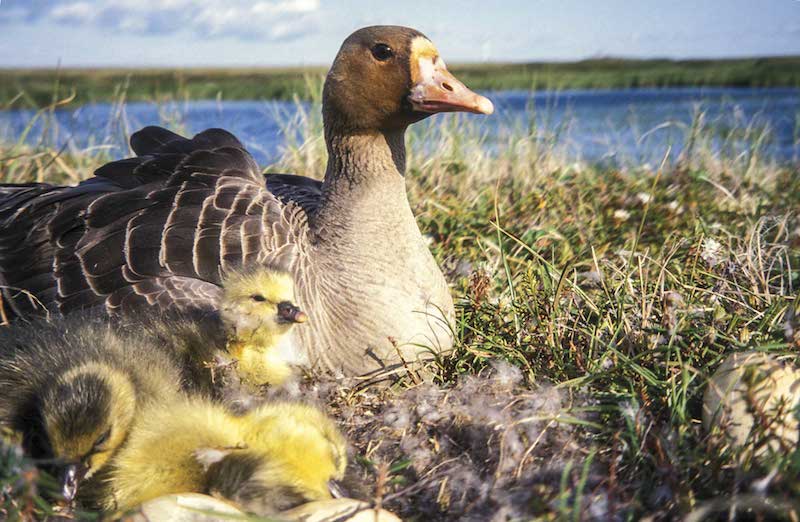
The seasonal or perennial lake ice in the Arctic is a vital factor in biological processes within these ecosystems. Lake ice protects many species from the cold atmospheric conditions of Arctic winters. The lake ice acts as insolation, keeping underlying waters habitable to some aquatic species. The ice also acts as a barrier between organisms and UV radiation, nutrients/contaminants, atmospheric gases and precipitation. The Arctic climate system makes lakes susceptible to climatic extremes, with high variability in temperature, solar radiation and precipitation. In general, by reason of this variability, Arctic lake systems have relatively low biological productivity than similar lakes at lower latitudes. Consequentially, many organisms present grow at slow rates and species have lower turnover rates.
During the winter, many river organisms are able to adapt to survive in the cooling winter environment. Numerous fish species have been shown to alter their metabolism by reducing physical activity in order to reduce requirement for nourishment. Additionally, specific habitats within a lake system are chosen as winter habitats to ensure survival. Usually these locations are in slower moving water or adjacent lake and wetland systems. The most beneficial winter shelter is one with available groundwater inflow. Some invertebrates remain in their usual habitat, freezing in place by shifting into a state of dormancy. Many species have evolved to hold large stores of nutrients through the harsh winter season, have large thresholds for sudden seasonal change and the ability to adapt to numerous environments. In addition to aquatic organisms, many migratory bird species interact with Arctic lake ecosystems such as geese, gulls and ducks. Arctic lake ecosystems vary significantly across the circumpolar North since the species are highly correlated to climatic conditions. A simplified ecosystem of an Arctic lake is shown in Figure 1 (Prowse et al., 2008; International Arctic Science Committee, 2012).

Some biological activities, such as primary production, may be enhanced with reduced ice cover. However, increased temperatures and associated amplified winter precipitation have been shown to reduce fish health in the Arctic. Borgstrom and Museth found a negative correlation between snow depth and fish growth (Prowse et al., 2008).
Material on this page was provided by Maren Pauly and Tristan Mills, Department of Geography, University of Waterloo. Hover over photograph for image credit.
